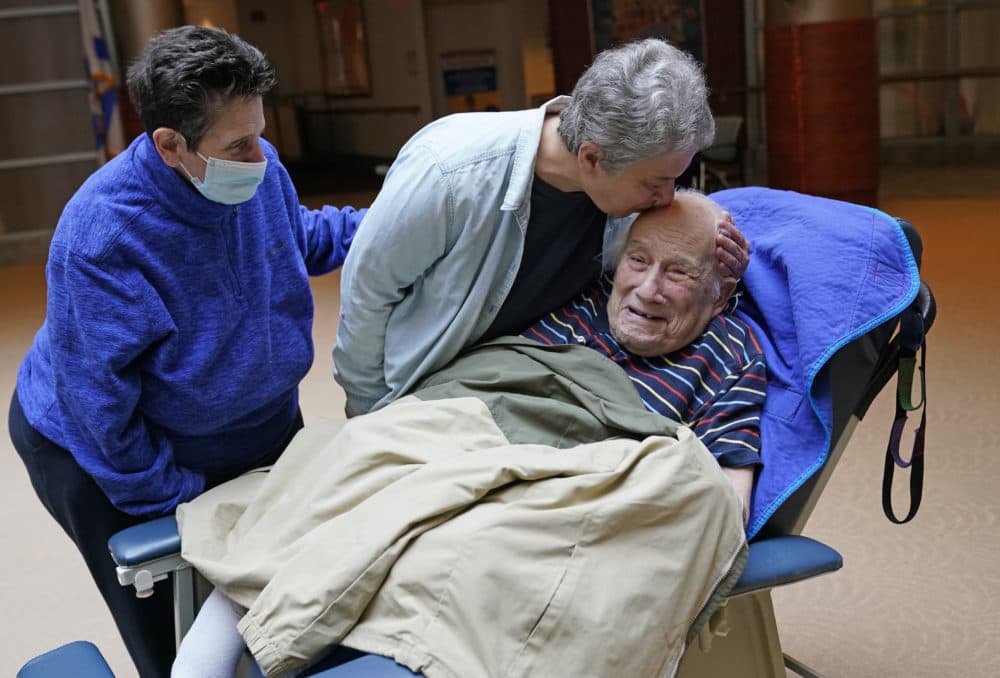Advertisement
Commentary
Once again, nursing home residents are paying the price

Recently, a nursing home patient of mine received a welcome visit from a relative — a relative who failed to accurately report his cold symptoms on the screening questionnaire. The next day, the relative tested positive for COVID, leading to an outbreak of five cases in the nursing home. In the early pandemic, that relative would never have been allowed in. Residents were condemned to extreme isolation, and paid the price in depression, dehydration, infections and adult failure to thrive. Now, nursing home visitor policies have swung to the opposite extreme, and once again, residents are paying the price.
Nursing home residents often feel isolated and lonely under normal circumstances, let alone during a pandemic that has been responsible for over 900,000 cases in nursing home residents and almost 150,000 deaths. These figures do not include the deaths that occurred during the same time from other causes that were indirectly related to the pandemic. Experts agree that family and friends visiting residents in nursing homes are critical to their wellbeing.
In the early months of the pandemic, there was panic and uncertainty on how to deal with the situation. In response, several governmental regulatory agencies recommended nursing homes suspend visitation, and several nursing homes voluntarily shut their doors to visitors. Some made concessions for compassionate visits for residents who were near end of life. Many family members couldn’t be with their loved ones when they were taking their last breaths. As a physician who works in nursing homes on a daily basis, I witnessed this firsthand. There was not much I could do but advocate for my patients at the end of their life, asking nursing homes to allow some leniency for compassionate visits and advising nursing homes on good infection control measures.
Even if a resident was quarantined because of an exposure or was suspected of having COVID, visitation could not be stopped.
Months later, various state and federal regulatory agencies established guidelines for nursing homes to allow outdoor visitation at first and then indoor visitation in dedicated areas that were supervised. Visitors would have to answer a screening questionnaire and get their temperatures measured. The visits were time limited, and the staff would monitor that masking and other safety procedures were followed.
In November 2021, just five weeks before the latest surge in cases, the Centers for Medicare & Medicaid Services (CMS) released an updated visitation guidance. This directive ordered nursing homes to allow unrestricted visitation, without the need to show proof of being vaccinated or tested. A few weeks later, we saw the biggest surge since the pandemic started, with a record number of COVID-19 cases in nursing homes.
Due to the updated guidelines from state and federal agencies, nursing homes could still not ask for proof of vaccination. Even during the peak of the surge, visitors were not required to take a rapid antigen test that many nursing homes offered free of cost. Nursing homes were not allowed to suspend visitation even if they didn't have enough staff to allow safe visitation. Even if a resident was quarantined because of an exposure or was suspected of having COVID, visitation could not be stopped.
CMS recommends that visitors adhere to proper masking and social distancing at all times. Nursing homes are neither equipped to police visitors, nor do they want to monitor them. I have seen many visitors remove their masks while they visit residents in their rooms. At times, I have seen multiple visitors crowding a patient’s room. Most rooms in nursing homes are not private.
I have seen many visitors remove their masks while they visit residents in their rooms.
There have been over one million COVID-19 cases and 2,289 deaths among nursing home staff. These employees put themselves and their families at risk just by showing up to work. Fear from COVID and fatigue are some of the top reasons for staff quitting, and staffing at nursing homes is at a historic low. Shouldn’t we also worry about the safety of staff?
I offer a few simple suggestions to our regulatory authorities. Hospitals across the country have policies addressing this issue. These, in my opinion, are commonsense approaches. Specific visiting hours should be established. The number of visitors a resident can have in a day should be limited. Nursing homes should be allowed to ask for proof of vaccination. If a visitor is not vaccinated, they should be asked to do a rapid test, at no cost, that takes only a few minutes. If we can have similar regulations at restaurants and airports, then why not in nursing homes, where we have seen about a quarter of the country's COVID deaths?
We need to protect our frail loved ones who reside in nursing homes, people who often don’t have much of a say when these regulations are made. Public outcry on this issue may sway the regulatory agencies to adopt a commonsense approach to safety. Right now, while the number of COVID-19 cases is are low, we have a chance to rethink our approach and prepare for the future.
